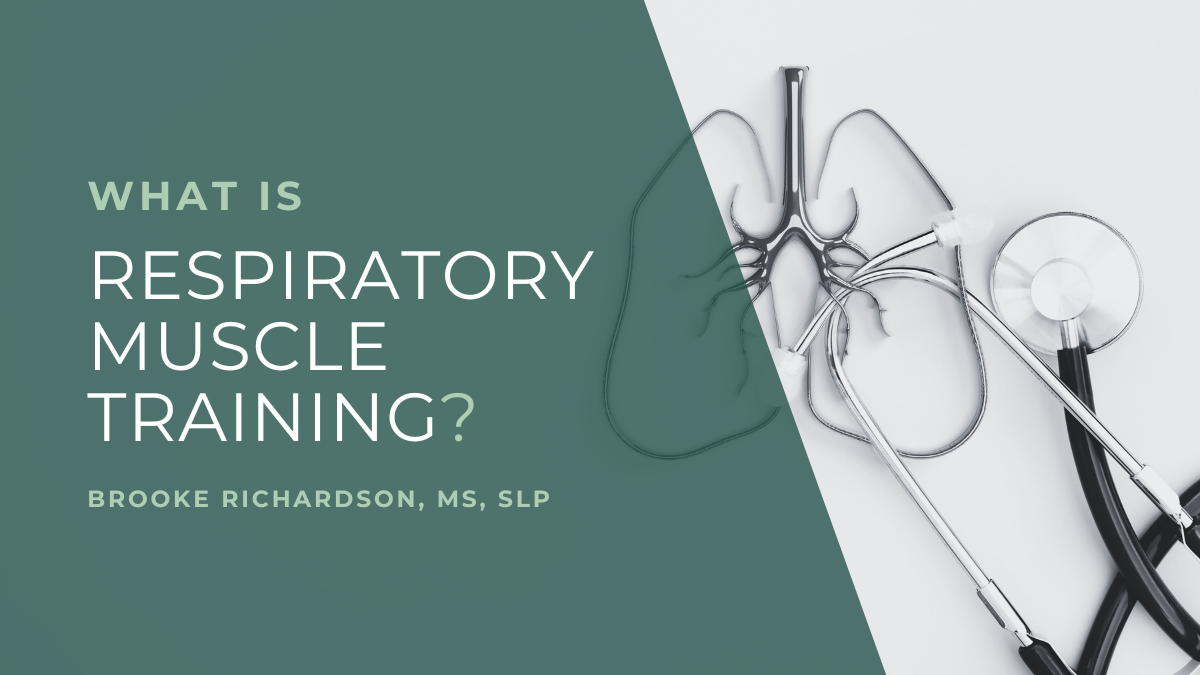What is Respiratory Muscle Training?

Brooke Richardson, SLP, highlights the benefits of respiratory muscle training in healthcare.
What Is Respiratory Muscle Training?
Respiratory Muscle Training (RMT), also known as Respiratory Muscle Strength Training (RMST) is a specialized approach to strengthening the muscles involved in breathing. These muscles include the diaphragm, intercostals (the muscles between the ribs), abdominals, and accessory muscles that assist in respiration. Just like training any other muscle group in the body, respiratory muscles can be exercised to improve their strength, endurance, and efficiency.
RMT can also be used to improve the strength and function of other muscles to improve things like oropharyngeal dysphagia (swallowing difficulty) and vocal fold abduction (opening).
RMT may incorporate inspiratory muscle (strength) training (IMT / IMST) and/or expiratory muscle (strength) training (EMT / EMST).
Why Is Respiratory Muscle Training Important?
Strong and efficient respiratory muscles play a vital role in overall health. RMT can help:
- Improve breathing efficiency & comfort: Especially for people with conditions that make breathing more difficult, like COPD, asthma, or neuromuscular diseases.
- Enhance physical performance: Athletes and individuals engaged in high-intensity exercise can benefit from optimized breathing.
- Promote recovery: RMT is often part of rehabilitation programs after surgery or illness affecting the lungs or airways.
- Prevent decline: Improving the strength and function of the respiratory muscles can prevent age- or disease-related declines in breathing, swallowing, and more.
- Increase balance & gait: RMT can be used to target muscles that are important for preventing falls and maintaining a healthy posture.
- Support speech, voice, and swallowing: Respiratory muscles are also critical for functions like speaking and swallowing.
How Does Respiratory Muscle Training Work?
RMT involves using specific devices to provide resistance while breathing in (inspiratory training) or breathing out (expiratory training), and sometimes both. By practicing against load, just like weight-lifting, the respiratory muscles become stronger and more capable of handling everyday tasks and physical activities.
While there are several types of respiratory muscle training, pressure-threshold training is the most supported by literature and is gaining popularity amongst clinicians.
Who Can Benefit From RMT?
RMT is beneficial for a wide range of individuals, including:
- People with medical conditions such as COPD, asthma, or neuromuscular disorders.
- Individuals with swallowing disorders, specifically pharyngeal dysphagia with or without aspiration.
- Post-surgical patients who need to rebuild their breathing capacity.
- People with prolonged ventilator use with a goal of partial or complete liberation from mechanical ventilation.
- Athletes looking to optimize their performance and endurance.
- Older adults who want to maintain or improve their respiratory health.
Why Learn About RMT?
If you're a healthcare professional, understanding and implementing RMT can significantly benefit your patients. Incorporating these techniques into your practice can improve patient outcomes, enhance their quality of life, and expand the range of services you offer.
Ready to learn more about respiratory muscle training?
Our courses are designed to equip healthcare providers with the tools and knowledge they need to implement RMT effectively. Visit breathehab.com to explore our training programs and discover how you can help your patients breathe better.
Categories: : RMT basics
 Brooke Richardson
Brooke Richardson 